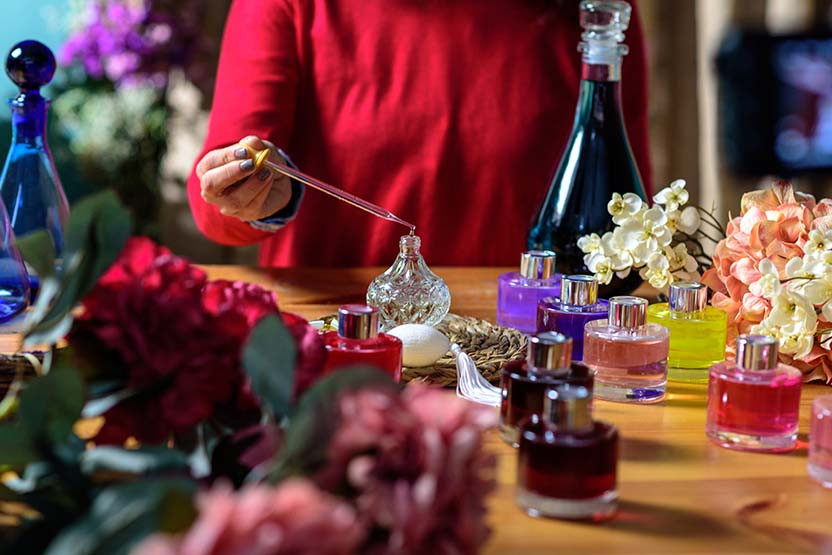What Fragrance Is Made Of: The Science Behind Scents
9th May 2025
From natural ingredients like botanicals to synthetic chemicals, scent plays a large role in the items we use daily. If you check the ingredients list of your favorite personal care products or cleaning products, you’ll find “fragrance”. This broad category includes combinations of natural or synthetic ingredients that create pleasant scents. This guide will explain what fragrance is made of, the science behind the scents you love, and how to learn more.
The Science of Fragrance Making
Fragrances begin as raw materials in 1 of 3 categories: natural, animal, and synthetic ingredients. After sourcing the raw ingredients, the extraction of fragrance oils begins.
Consumer scents include just a percentage of this perfume oil along with carrier ingredients. Oil extraction happens in many ways, including expression, steam distillation, and solvent extraction. The method of extraction depends on the material and its durability.
Perfumers use fragrance oils to formulate colognes and other wearable scents. This is when they craft the top notes, heart notes, and base notes of a fragrance. After blending the fragrance oils and carriers, like alcohol, the perfume can age, allowing the scent to develop.
Interestingly, we can’t separate the science of the fragrance industry from the history of perfumes. From aromatic and smoky gums and resins to modern fragrance compounds, scent is the marriage of science and culture. Era has a significant influence on the fragrance notes—and ingredients—of perfumes.
Common Fragrance Ingredients
Today, scents are made of a seemingly infinite number of ingredients. You can broadly sort these into 3 main categories: natural, animal, and synthetic. However, most formerly animal-derived products now have popular synthetic alternatives because of ethical issues.
Natural perfume ingredients include absolutes, oils, and resins from plants. These could come from flowers, like roses, and jasmine, herbs like lavender, fruits like citrus, or wood, like sandalwood. Patchouli, vetiver, bergamot, and ylang-ylang are more common natural fragrance ingredients.
Animal-derived products used to be popular in perfume-making. These included ingredients like ambergris from sperm whales, deer musk, and civet (a secretion from an African cat). Today, synthetic musks have overtaken the market.
Synthetic ingredients are the most common to find in modern perfumes. Synthetic components can replicate rare, expensive, and unethical scents, recreating them with more stability and consistency.
Discover the Chemistry Behind Fragrances You’ll Love
The science of scent attraction teaches us that we subconsciously feel attraction to people because of their smells. At Surrender to Chance, we believe that fragrance can be a gateway into a more fun and fulfilling life. By following our noses—literally—we’ve been discovering and rediscovering our passion for scent for years.
Being a fragrance expert isn’t necessary for knowing what you like and dislike. If you love a family member’s cologne or have a favorite body lotion, you already have a starting point. Try our fragrance sampler sets to begin your journey into the world of fragrance!

